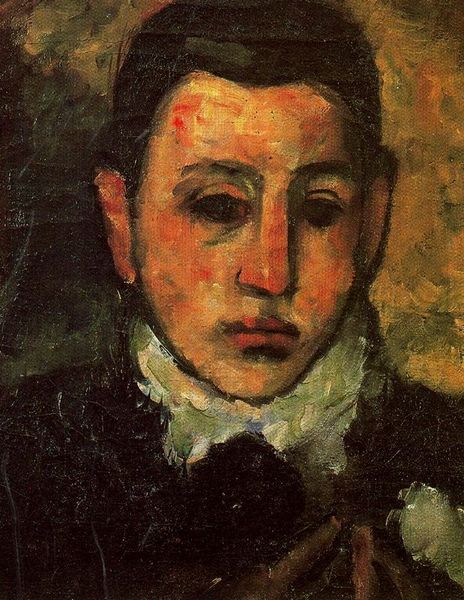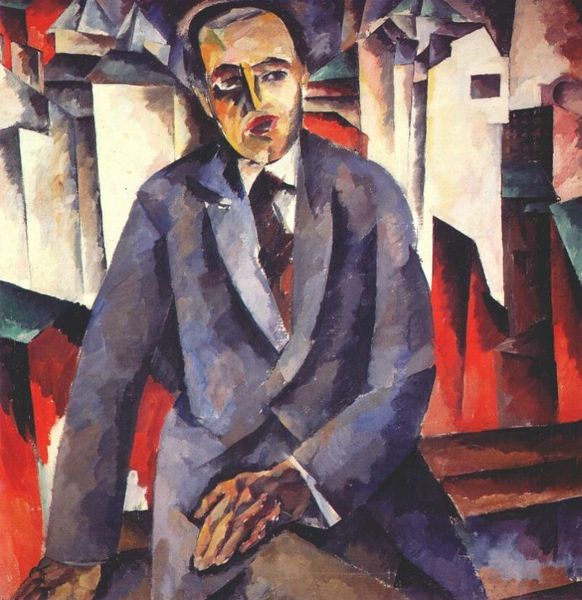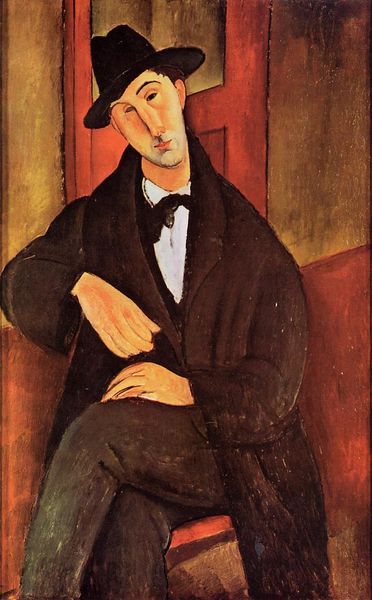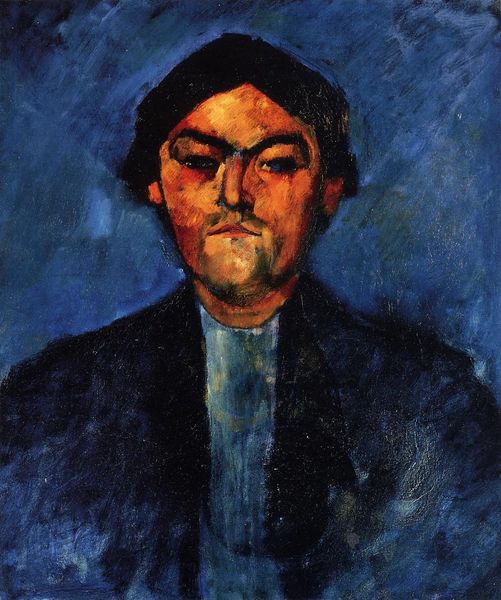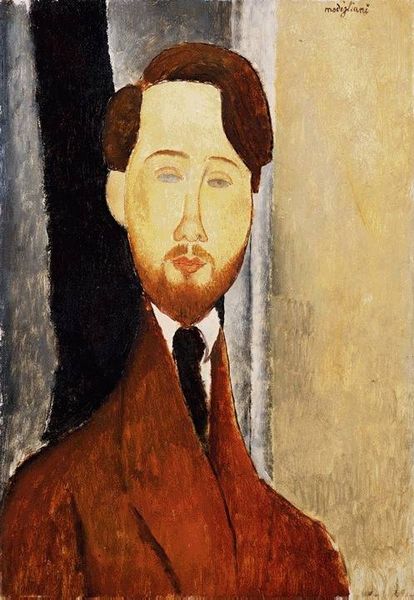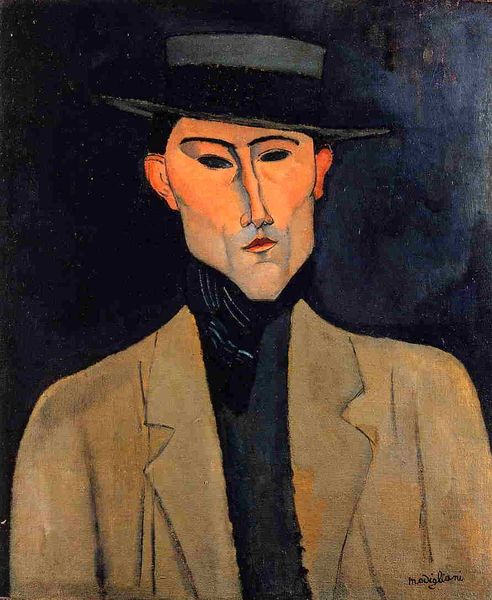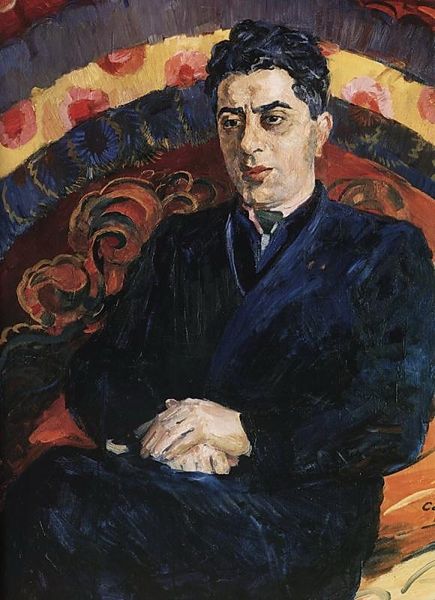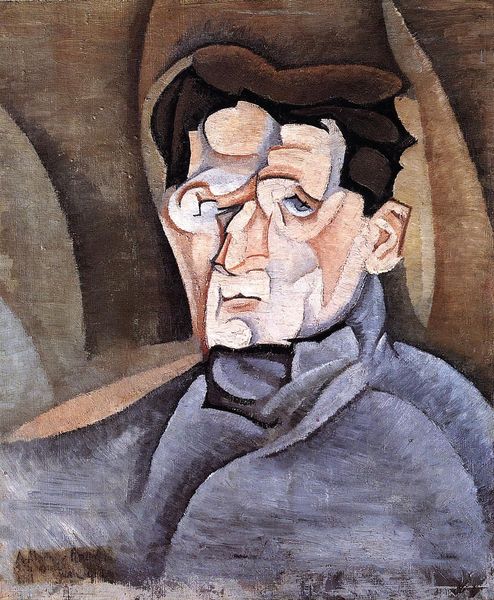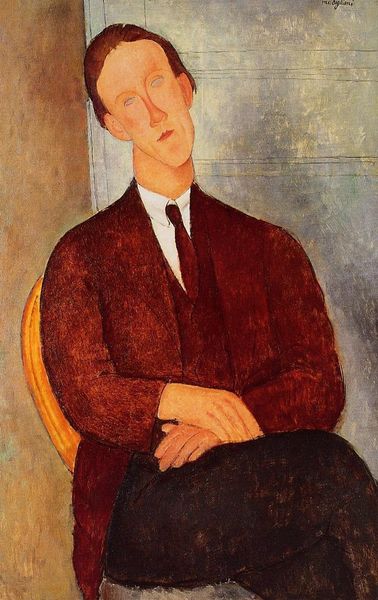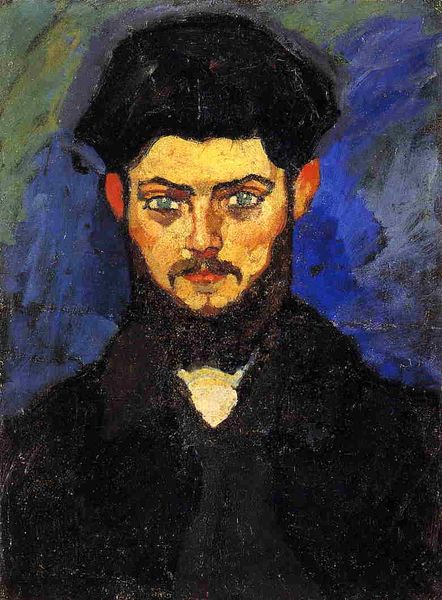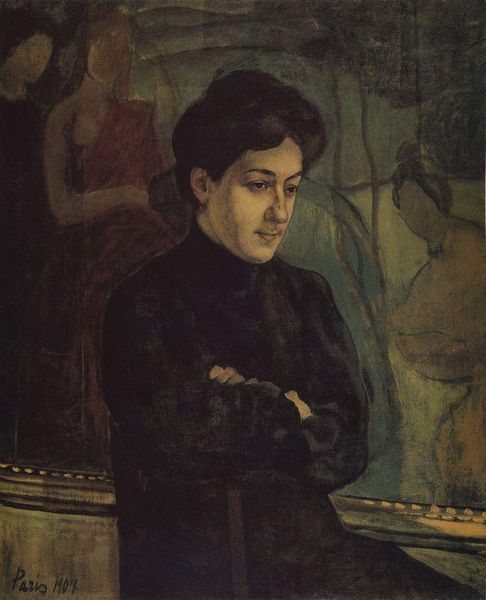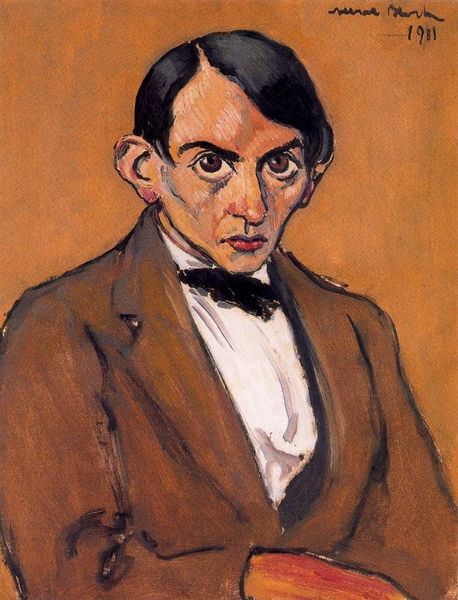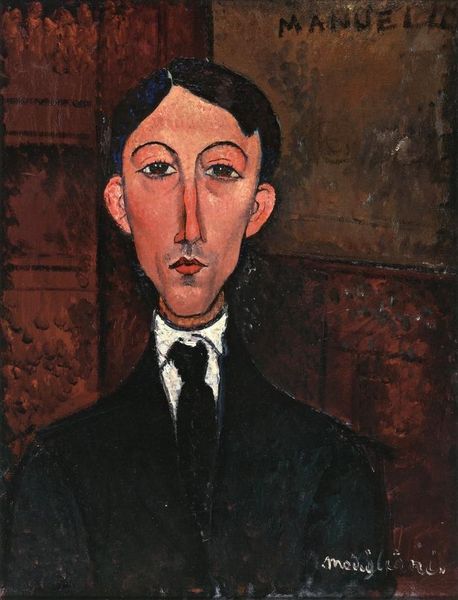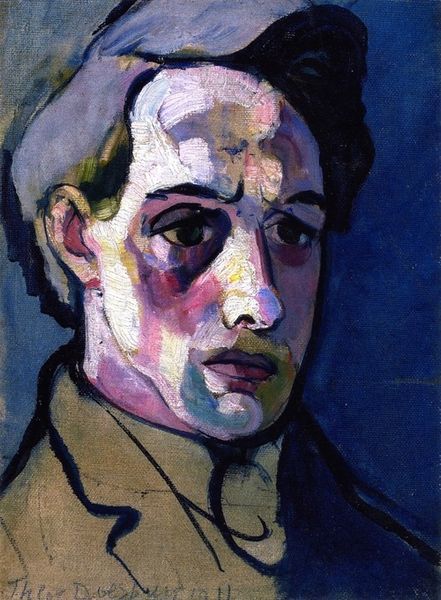
painting, oil-paint
#
portrait
#
painting
#
oil-paint
#
oil painting
#
male-portraits
#
expressionism
#
portrait drawing
#
italian-renaissance
Dimensions: 81 x 60 cm
Copyright: Public domain
Curator: Looking at "Jean Alexandre" completed in 1909 by Amedeo Modigliani using oil on canvas. This striking painting offers a window into Modigliani's early portraiture, doesn’t it? Editor: Oh, he looks weary! I sense this sort of gentle resignation in his eyes, almost like he's carrying the weight of the world—or at least the weight of his rather formal attire. Curator: Indeed! It's interesting to think about the context. Modigliani was working in Paris at this time, amidst the fervor of avant-garde movements. This painting provides us a unique example of male portraiture. How does the sitter’s identity and attire reflect the societal status of its time? Editor: The somber palette definitely anchors it. Brown background melting almost seamlessly into the sitter's dark jacket. The limited color range pushes everything inward, focusing your gaze right on his face, but is the portrait also an exercise in, you know, making do with less and I can almost feel Modigliani, restricted as he was, wrestling poetry out of what was right there! Curator: Absolutely! This work definitely is one of several artworks that mirrors the aesthetic influence and interests Modigliani had from artists of Italian Renaissance. I am thinking of Leonardo da Vinci. I mean look how his face softens with this subtle use of shadow and light. Editor: Yes! While it flirts with Renaissance ideals, there's this rawness, an almost desperate need to capture something fleeting, and deeply emotional. His portrait does have, however, a quiet intensity about him that is so powerful. Curator: Modigliani really had that incredible ability to expose both inner vulnerabilities and a resilient spirit using basic materials such as the canvas, oil paint with such expressionist techniques. Editor: Looking at "Jean Alexandre" and its sort of moody introspective feeling I wonder: are portraits meant to celebrate status or can they capture a state of the soul. Curator: I think it is a fascinating way to see a person as a cultural product and not just as an individual but really someone whose image communicates volumes of context. Editor: It certainly makes you consider all the things the portraits do for and to us, and especially portraits like this one, whose effects linger far longer than the viewing experience.
Comments
No comments
Be the first to comment and join the conversation on the ultimate creative platform.
